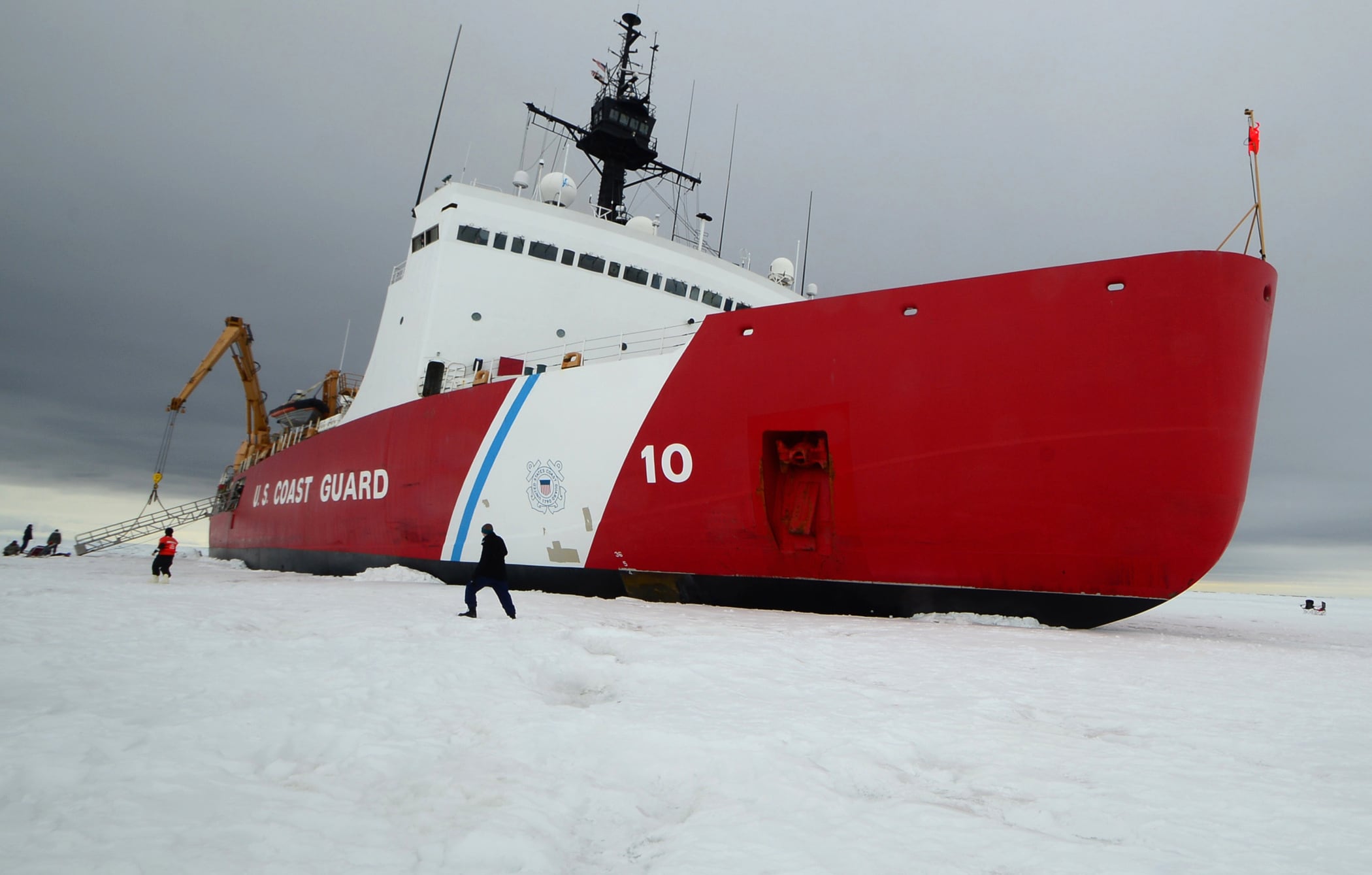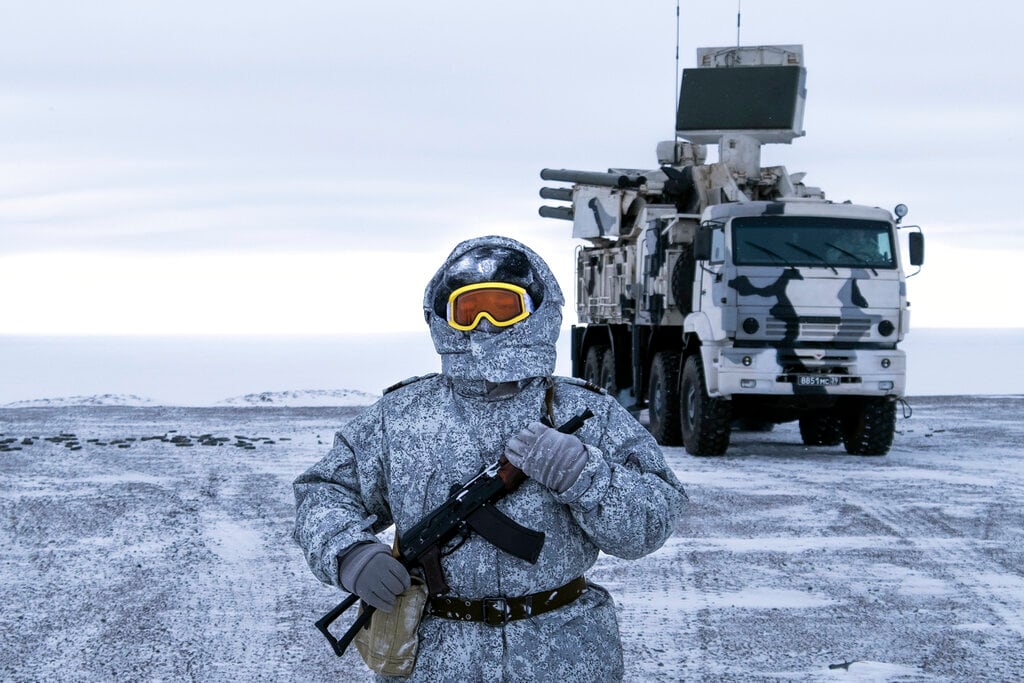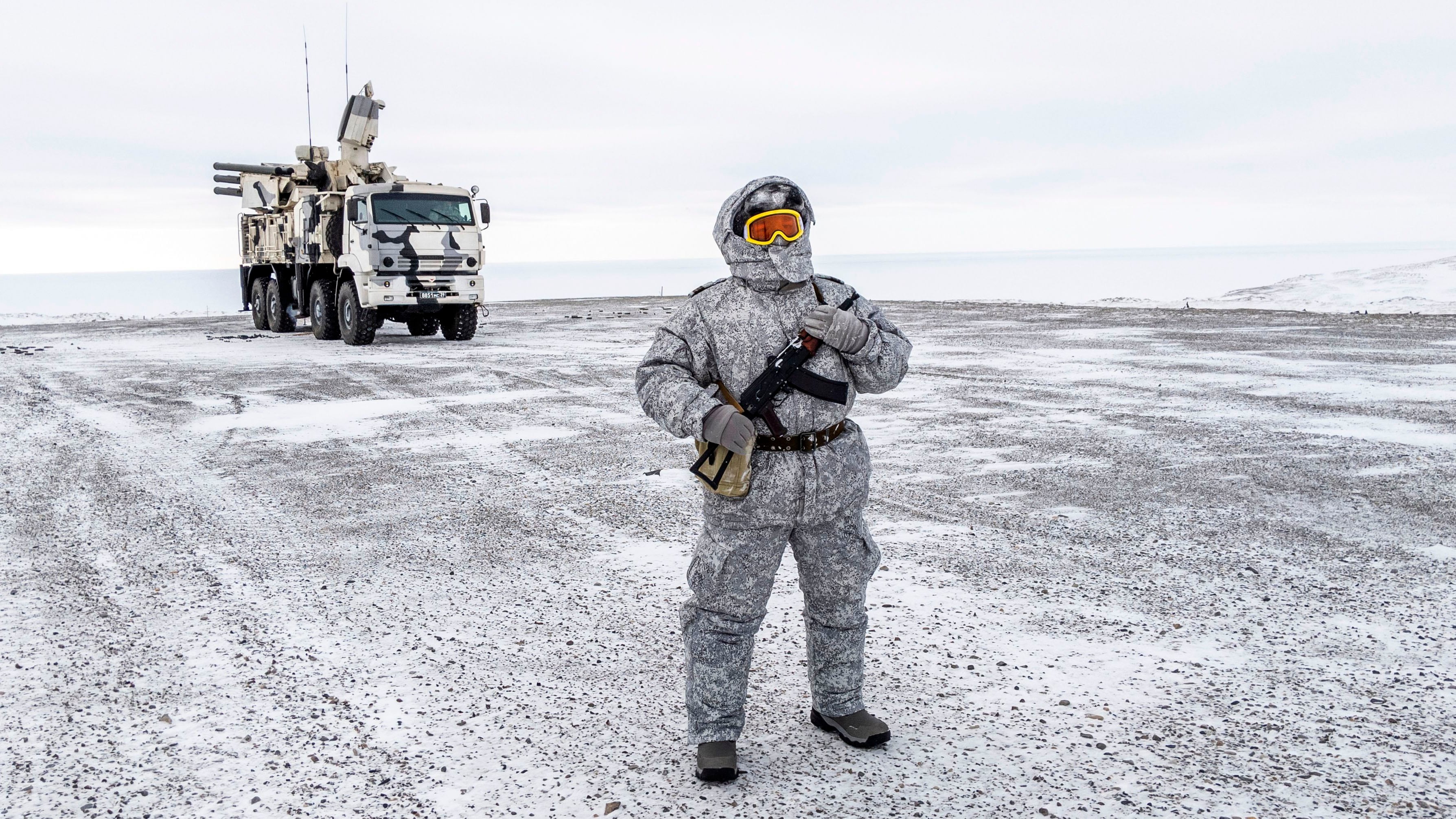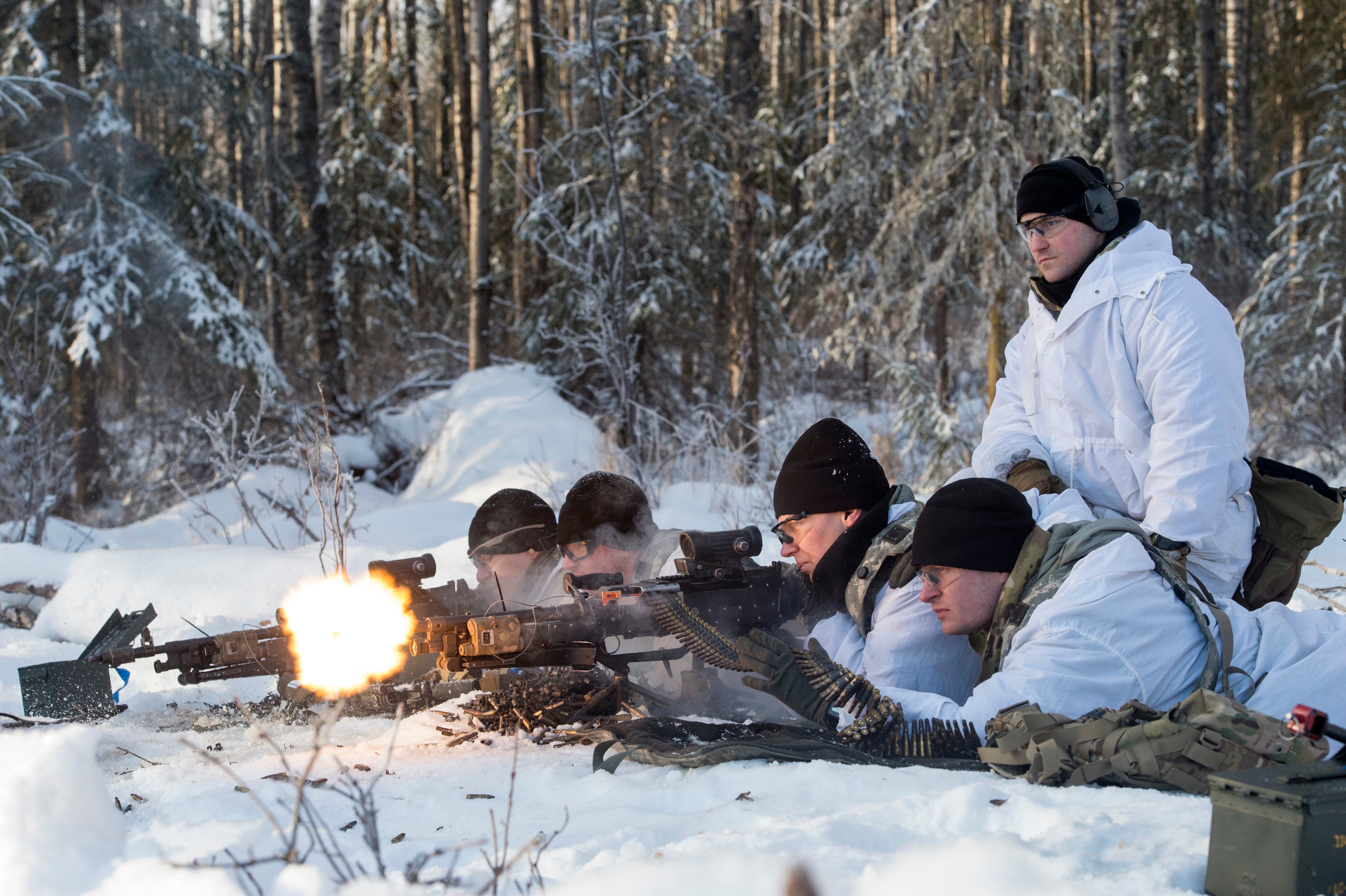The Coast Guard hasn’t gotten much love in the era of renewed great power competition, but that might be changing.
The coastal defense service has been lobbying for an increased focus on America’s Arctic territorial waters. As the region warms, new sea lanes are opening up and access to trillions of dollars in minerals, natural gas and ocean fisheries are expected to come into play.
“The nation’s security demands in the region are both pressing and enduring," Coast Guard commandant Adm. Karl Schultz wrote in a new strategic outlook document published by the service this month. "What was previously a region of energy interest and challenge is now an increasingly competitive domain.”
The document, which is the first new Arctic policy paper by the service since 2013, introduces several lines of effort that the Coast Guard will pursue to keep the Arctic “conflict-free" and to ensure the U.S. government maintains leadership in the region.
In 2018, the United Nations approved six two-way navigation routes — the first internationally recognized ship routing measures for polar waters. The routes transit areas in the Bering Strait and in the nearby waters off the coasts of eastern Siberia and western Alaska.
Those routes, and others that follow, have the potential to turn the Arctic into a geostrategic region on par with the Straits of Malacca — a major shipping channel between the Indian and Pacific oceans — and the Suez Canal, according to the Coast Guard.
For example, the Northern Sea Route offers a 35-day mean transit time from Shanghai, China, to Rotterdam, Netherlands, shaving two weeks off the Suez and Malacca transit route.
“This has powerful implications for both commerce and military mobility,” the Coast Guard outlook reads. For instance, “China’s attempts to expand its influence could impede U.S. access and freedom of navigation in the Arctic as similar attempts have been made to impede U.S. access to the South China Sea.”
New fleet for new voyages
First, the Coast Guard must be able to actually operate in the region.
“Over the past 15 years, the nation’s strategic competitors have invested heavily in Arctic-capable assets, infrastructure, and relationships, some of which are targeted at eroding the influence of America and the rule of law,” the outlook reads. “U.S. investments over that same period of time have been comparatively modest.”
This has resulted in a strategic resource gap that threatens the U.S. military’s ability to effectively uphold sovereignty and the Coast Guard’s ability to manage maritime risks inherent in increased human activity in the Arctic, the Coast Guard said.
The service has only one operational heavy icebreaker. But commissioned in 1976, the Polar Star is a dozen years past its intended service life. A new polar icebreaker was funded by Congress early this year, which includes $655 million for designing and building the vessel, $20 million for materials to eventually build a second one and $740 million for new cutters, including six to be based in Alaska under the Polar Security Cutter Program.

“The Coast Guard is the sole provider and operator of the U.S. polar capable fleet,” the outlook reads. “This national fleet does not currently have the capability or capacity necessary to assure access in the high latitudes.”
But the service will need more than ships. The outlook describes a need for aviation assets, unmanned systems and personnel, all capable of operating in the austere and remote Arctic.
A blend of permanent, seasonal and expeditionary operations will be necessary as the Coast Guard retools existing concepts of operation to support both surge and steady-state Arctic operations, including the growing role of cyber and information operations, according to the service.
The need for Arctic military capabilities is not solely relegated to the Coast Guard, however.
RELATED

In November, the U.S. and its NATO allies held a massive joint exercise in the Arctic known as Trident Juncture, which focused on preparing ground, naval and air forces for operating in freezing temperatures should the alliance need to defend northern territory against an aggressor nation.
“The Arctic is an area that we really need to focus on and really look at investing,” NORAD commander Gen. Terrence O’Shaughnessy told senators in February. “That is no longer a buffer zone. We need to be able to operate there, we need to be able to communicate there, we need to be able to have a presence there that we have not invested in, in the same way that our adversaries have.”
China and Russia have Arctic ambitions
Second, strategic competitors — China and Russia — are poised to challenge “the long-standing norms that have kept the Arctic an area of peace and low tension. The institutions contributing to a conflict-free Arctic will face new challenges requiring active and committed American leadership,” the document reads.
China has no Arctic territory, but the country began holding observer status on the Arctic Council in 2013. Last year, China published a white paper in which it described itself as a “near-Arctic state.” The country is pursuing a “Polar Silk Road” plan designed to build a range of Arctic infrastructure to include ports, undersea cables and airports.
China is also constructing its second ice-capable ship, and announced that it will begin building a nuclear-powered icebreaker.
“China’s attempts to expand its influence could impede U.S. access and freedom of navigation in the Arctic as similar attempts have been made to impede U.S. access to the South China Sea,” the Coast Guard outlook reads.

Russia is even more entrenched in the region. The Kremlin operates a fleet of at least 40 icebreakers — the world’s largest such fleet — and has been building out and enhancing air bases, ports, weapons systems, troop deployments, domain awareness tools, commercial hubs and floating nuclear power plants.
“A key element of the strategies of our competitors is to engage in activities that weaken the international order that underpins a free and open maritime domain,” the outlook reads. “They do so under a cloud of ambiguity that makes it difficult to mount an effective or timely response to such activities.”
The outlook document notes that the Alaskan people are critical in this approach. Their state borders U.S. claims to the region.
“Alaska Natives are a critical layer of security in the Arctic. Based on generations of experience, they help close information and operational gaps, driving down risk,” the Coast Guard said. “In a variety of ways, secure and resilient local communities will be less vulnerable to coercive tactics demonstrated by strategic competitors.”

U.S. Army Alaska, the ground force defending much of the U.S. territorial claims near the Arctic, includes a combined force of 25,000 active duty, National Guard and Reserve troops.
Using training range locations like Joint Base Elmendorf-Richardson, the active-duty Army has been working to increase its troops’ exposure to the cold through airborne operations, medical evacuation training and armored vehicle deployment exercises.
The 75th Ranger Regiment even returned to Alaska in 2014 to train for the first time since 2001 at the U.S. Army Alaska Northern Warfare Training Center.
Additionally, the Marine Corps is currently on its fifth six-month iteration of sending roughly 700-man rotational groups through Norway, where they train in cold-weather warfare alongside NATO allies in the region.
The Coast Guard outlook also stressed the need to conduct outreach to civilian entities. Building strong relationships with local companies and municipal governments in Alaska and elsewhere will be key to reinforcing rules and norms that China and Russia could seek to undermine.
Protecting international laws, such as those that deal with fishing and energy exploration rights, is key to the Coast Guard’s Arctic plan going forward.
“Working closely with allies and partners, the Coast Guard will deter threats to international maritime norms and America’s national interests by conducting effective maritime operations and exercises along the full spectrum of competition,” the outlook reads.
Kyle Rempfer was an editor and reporter who has covered combat operations, criminal cases, foreign military assistance and training accidents. Before entering journalism, Kyle served in U.S. Air Force Special Tactics and deployed in 2014 to Paktika Province, Afghanistan, and Baghdad, Iraq.





